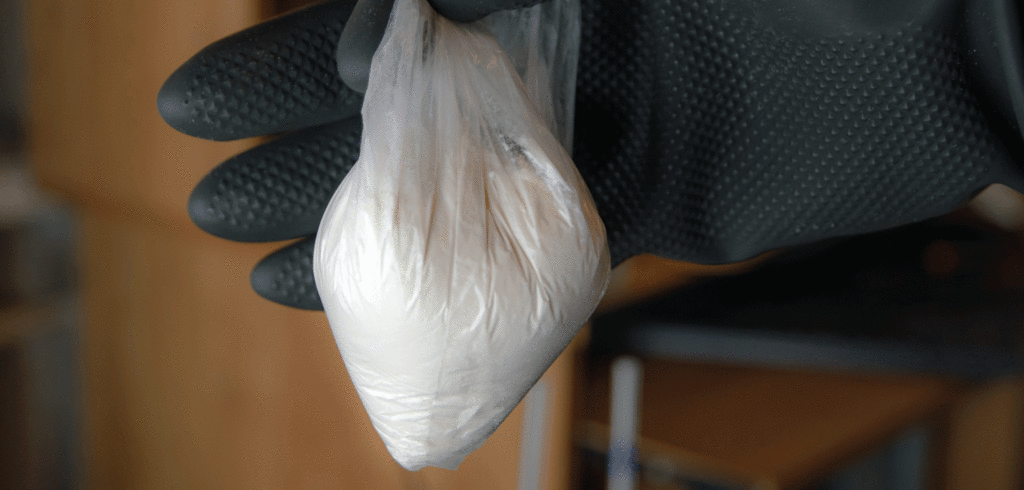The US Department of Homeland Security (DHS) Science and Technology Directorate (S&T) has announced eight finalists in the first stage of the Opioid Detection Challenge, a US$1.55m global prize competition for rapid, nonintrusive detection tools that will help find illicit opioids in international mail. The Challenge is an S&T collaboration with US Customs and Border Protection (CBP), the Office of National Drug Control Policy (ONDCP) and the US Postal Inspection Service (USPIS).
“I am alarmed about dangerous illicit opioids traveling through our international mail system not only because they feed the devastating opioid epidemic in our country, but because they put our operators at risk,” said acting secretary Kevin K McAleenan. “I am very impressed with the creative detection technologies submitted, and we look forward to deploying new solutions in operational environments.”
In Stage 1, the challenge called for well-developed plans for automated, user-friendly tools and technologies that have the potential to quickly and accurately detect opioids in parcels with-out disrupting the flow of mail. The finalists are:
• Atomic-level Drug Detection (Dynaxion): A solution to use high-frequency radio waves in a particle accelerator technology developed by the European Organization for Nuclear Research (known as CERN). As neutrons and gamma rays pass through parcels, the solution analyzes the energy spectra produced.
• Automated Multimodal Opioid Detection (Battelle): A layered approach to opioid detection. Machine-learning algorithms are applied to images captured through dual-energy radiography and hyperspectral imaging.
• Enhanced X-ray Diffraction (HALO X-ray Technologies): A solution to detect the presence of opioids by measuring how x-rays are diffracted when they pass through a parcel. By emitting the x-rays in a conical structure, this solution generates a stronger signal and improves the accuracy and speed of detection.
• Nonimaging Concealed Drug Detector (One Resonance): A quadrupole resonance technology that uses radio-frequency signals to search for specific materials. An alarm is triggered when a signal associated with an illicit substance is detected.
• Noninvasive Detection Using Molecular Signatures (GTBM, Inc.): A solution to use ultrasound technology in a molecular resonance detector that transmits sound waves and analyzes the returned frequencies. These frequencies are analyzed to define the distinct atomic/molecular signature of the target sample.
• NQR Detection of Nitrogen-Containing Substances (Vadum, Inc.): A nuclear quadrupole resonance (NQR) technology that emits radio-frequency pulses to detect specific nitrogen-containing molecules. Illicit substances resonate at different frequencies, allowing detection of targeted compounds.
• Operator-free X-Ray Diffraction (XID, LLC): An energy dispersive x-ray diffraction (EDXRD) technology that uses a polychromatic beam to increase signal strength and detection speed. Diffraction patterns are compared with a library of known threats.
• Scanner and Algorithms for Automatic Opioid Detection (IDSS Holdings): A solution that combines a 3D x-ray computed tomography (CT) scanner with automated detection algorithms. It detects anomalies in x-ray images based on the scanned item’s features and physical properties.
A judging panel of experts in forensic science, postal operations, drug interdiction, industrial engineering and artificial intelligence helped to select the eight finalists, according to the selection criteria. Each finalist will receive US$100,000 in cash prizes and advance to Stage 2 of the competition.
In Stage 2, finalists will participate in a 14-week prototyping accelerator, during which they will develop their plans into testable prototypes and compete for an additional US$750,000 in cash prizes. Stage 2 culminates in a live test event hosted by the DHS, where finalists will convene for on-site testing of their prototypes. The challenge expects to award one US$500,000 grand prize and one US$250,000 prize to a runner-up.
“A critical part of addressing the addiction crisis is finding new ways to stop the flow of deadly drugs coming into our country. This is exactly why we have taken a whole-of-government approach and launched this competition. The responses from innovators, universities, and technology leaders have been outstanding. We will continue to support the development of these creative solutions that have the potential to detect opioids and ultimately save lives,” ONDCP director Jim Carroll said.
“A significant challenge in the past few years is the increasing volume of parcels in international mail. Novel technologies are critical to help us screen these parcels for dangerous drugs like fentanyl,” said DHS senior official performing the duties of the Under Secretary for Science and Technology William N Bryan. “We are excited to support these teams as they advance their innovations in the next stage of the challenge.”
“We are encouraged by the levels of innovation submitted by these finalists and the possibilities of each technology. The USPIS is looking forward to the next steps of the Challenge and finding better ways to identify and stop opioids from coming into our communities and our homes,” chief postal inspector Gary Barksdale said.
The abuse of opioids such as fentanyl has created an unprecedented public health crisis across the USA. Every day, more than 130 people in the USA die from opioid overdoses. International mail has been identified as a route for illicit opioids entering the USA, commonly transported in nearly pure, powdered form. Large-scale drug trafficking can occur via very small packages sent in the mail.
For more information about the Opioid Detection Challenge, visit opioiddetectionchallenge.com


